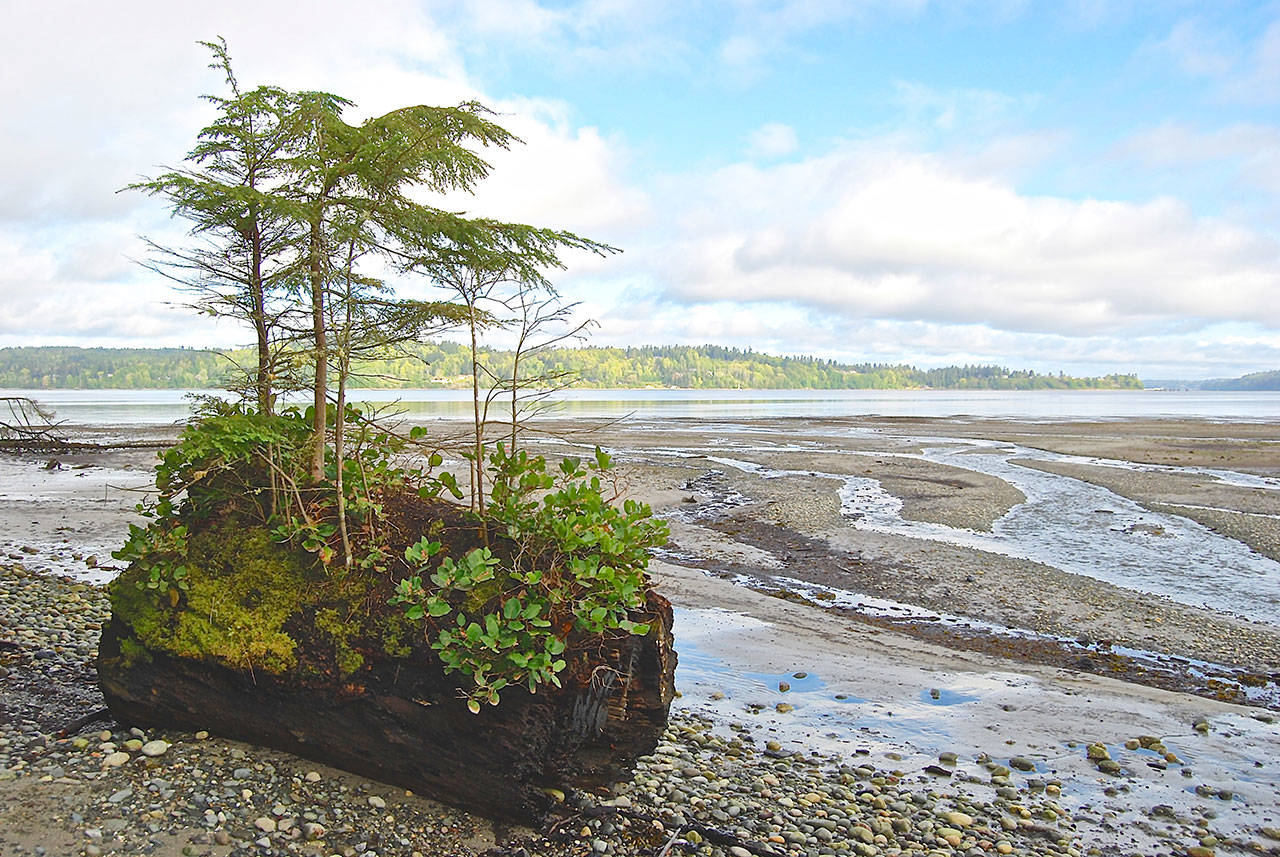I’m so grateful to live in nature. Vashon is far from the myth of pristine wilderness, but there is diverse and dynamic nature everywhere on this island for those who know how and where to look. Vashon’s very existence is evidence of prehistoric geological upheaval: steep ravines, shoreline landslides and surreal views of the Cascade volcanos and coastal range remind us that our island sits upon a dynamic planet.
Meanwhile, Vashon’s diverse habitat reads like the index of an ecology textbook: shoreline; estuaries; grasslands; freshwater wetlands in the forms of creeks, ponds, marshes and bogs; and forests of all kinds from misshapen madrone clinging to the dusty bluffs of Maury to the mossy lushness of the mammoth cedars on the west side.
There’s also a robust, seasonally changing bird population — winter ducks and seabirds, spring migrants and summer nesters, as well as the impressive airborne predators, including eagles, owls, osprey and hawks.
We are routinely treated to the comings and goings of critters of all kinds: orcas rounding Point Robinson as they power down Puget Sound chasing salmon that may be headed to Judd Creek, predatory carnivores forcing us to re-think our status in the food chain and a menagerie of unusual things the tide brings in.
It’s not enough to simply list the wonders of Vashon Island; nature is about connections, changes over time and the impact of our choices on other species — all the ways in which “anything by itself” is “hitched to everything else in the Universe,” as John Muir wrote in “My First Summer in the Sierra.” It can get complicated.
That’s why I’m also grateful there are so many people here to help us observe, interpret preserve and celebrate nature. Three local groups, Vashon-Maury Island Audubon, The Vashon Nature Center and The Vashon-Maury Island Land Trust, are staffed by curious and competent professionals and volunteers who work really hard to support nature on Vashon. In this column, I’ll try to amplify their efforts and share what they know and continue to learn about the status and fate of nature on Vashon and the planet.
Full disclosure: This is a column, not news, so here are my biases: I am pro-nature. I am firmly on the side of the green, the furry, the feathered, the fungal, the slimy, the scaly and the crawly. I am not a scientist, though I have been trained to de-code and communicate science. While I always try to get my facts straight, sometimes I may wander off the scientific trail to wonder about connections that may not appear in the peer-reviewed literature, because I believe the way into nature is not only through our minds, it is through the part of us that gets the shivers when we sense the sublime.
Importance of forage fish discussed at recent event
An Audubon-sponsored talk earlier this month illustrated a textbook example of the fundamental interconnectedness of nature on Vashon and its surrounding waters.
Dr. Tessa Francis, lead ecosystem ecologist for the Puget Sound Institute at UW Tacoma and managing director of the Ocean Modeling Forum, spoke to an audience that was packed like sardines at the Land Trust about forage fish of the Salish Sea. She lives on Vashon and serves as a volunteer adviser to the Vashon Nature Center (VNC).
She studies Pacific herring and their role in the Puget Sound ecosystem. Herring and other little fish, such as surf smelt, sand lance, anchovies and sardines, are at the hub of the marine food web. They feed on microscopic plankton and form massive synchronized schools that are target prey for top marine predators, including some of our favorite charismatic megafauna: seals, salmon and seabirds. Forage fish also serve humans: They have a long history of economic and cultural importance, especially for the native people of the Salish Sea.
With so many species depending on forage fish to survive, Francis said it is critical to understand how their survival in turn depends on how we manage multiple environmental issues. Shoreline armoring, for example, is detrimental to beach spawners such as the sand lance. The combination of armoring and sea level rise due to climate change creates a “coastal squeeze,” that may affect up to 80 percent of spawning habitat. Francis cited other issues such as water quality, disease and predation by harbor seals as potential threats to forage fish populations.
— Chris Woods


